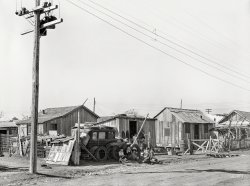
MAY CONTAIN NUTS

Search Shorpy
SHORPY ART

Framed or unframed, desk size to sofa size, printed by us in Arizona and Alabama since 2007. Explore now.
Join and Share
Ad-Free Shorpy
Shorpy is funded by you. Patreon contributors get an ad-free experience.
Learn more.

Recent comments
- Details, Details
- What's that building to the left of the tower?
- Coal Barges
- Bromo-Seltzer
- Inner harbor
- The Basin
- What a headache!
- Giant stepladder?
- Baldwin 62303
- Baldwin VO-1000
- Cold
- No expense spared
- Tough Guys
- Lost in Toyland
- And without gloves
- If I were a blindfolded time traveler
- Smoke Consumer Also Cooks
- Oh that stove!
- Possibly still there?
- What?!?
- $100 Reward
- Freeze Frame
- Texas Flyer wanted
- Just a Year Too Soon
- WWII -- Replacing men with women at the railroad crossing.
- Yes, Icing
- You kids drive me nuts!
- NOT An Easy Job
- I wonder
- Just add window boxes
Member Photos
The Shorpy
Print Emporium
Print Emporium
Search Shorpy
Search results -- 30 results per page
- Car Radio: 1924
- ... somebody sells something.
(Technology, The Gallery, Cars, Trucks, Buses, D.C., Harris + Ewing) ... Posted by Dave - 05/04/2013 - 7:20am -
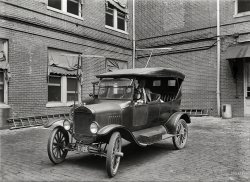
- Top This: 1929
- ... wheels, reminds me of a circus wagon.
(The Gallery, Cars, Trucks, Buses, Chris Helin, San Francisco) ... Posted by Dave - 05/06/2015 - 7:21pm -
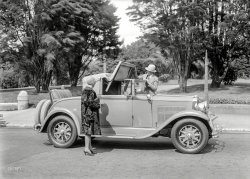
- Bancroft House: 1907
- ... Note the transit schedule on the corner, "Interurban cars for Bay City." Detroit Publishing Co. View full size.
Interesting ... likely waiting to make a "crew change" on the next car or cars through. This is still a common practice in mass transit today. The ... Posted by Dave - 08/25/2011 - 5:08pm -
![Bancroft House: 1907 Saginaw, Mich., circa 1907. "Bancroft House Hotel." Note the transit schedule on the corner, "Interurban cars for Bay City." Detroit Publishing Co. View full size.
InterestingDepth of field.
Relief CrewsBelow the interurban schedule sign are at least three interurban or street railway crewmen in their uniforms most likely waiting to make a "crew change" on the next car or cars through. This is still a common practice in mass transit today. The little building next to the line pole might be a phone booth or a shelter for the starter, inspector or supervisor who would keep track of the streetcars and interurban cars schedules assuring that they would be on time. Some contemporary larger transit systems use CAD (computer aided dispatching) and GPS to do this today.
Two interesting facts1. The first street corner in the world to have electric light was Washington and Genesee, outside the Bancroft Hotel. It was suspended from a rope and people came from miles and miles away to see it.
2. First incandescent bulb in Michigan lit the Bancroft Hotel. [Link]
New lifeThe Bancroft is getting a new life after being vacant for years. There is a restaurant in the floor and refurbished apartments throughout.
(The Gallery, DPC, Streetcars)](https://www.shorpy.com/files/images/4a22426a.thumbnail.jpg)
- A Greater Gardner: 1921
- ... by using 'threaded rubber' separators.
(The Gallery, Cars, Trucks, Buses, Chris Helin, San Francisco) ... Posted by Dave - 05/01/2018 - 12:34am -
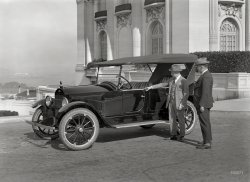
- Legal Briefs: 1925
- ... touring car. By October of '25 you could buy one of these cars for $765, which was only $105 more than the price of the Ford Fordor Sedan. Essex sold 159,634 cars in 1925.
The old Louisiana Avenue Before 1933, this block of ... Posted by Dave - 07/12/2011 - 9:19pm -
![Legal Briefs: 1925 Washington circa 1925. "Tepper Building, Standard Engraving Co., 470 Louisiana Avenue N.W." The Tepper family business is what you might call vertically integrated: Joe's law practice upstairs, above Saul's "Notions, Hosiery, Underwear." National Photo Company Collection glass negative. View full size.
Two for OneGet defended and hosed at the same time!
(Does George Washington live next door?)
HeadsThose two heads peering out of the Estes Building entrance give this photo a certain creepy effect.
[Plus the three ghosts outside. One is wearing pumps. - Dave]
Long goneLouisiana Avenue in the northwest quadrant of DC is just a short 3-block segment running from Constitution Avenue to Union Station, a stone's throw from the Capitol.
"Legal Briefs"may be the very best of Dave's pun-ishments of Shorpy viewers!
Keep 'em up!!
[So to speak. - Dave]
Tax BrassSign over the entrance to the building on the left: "Bureau of Internal Revenue," now known as the IRS.
1925 EssexThe car parked at the curb is a Second Series 1925 Essex 6 Coach, built after March of that year. Essex pioneered the first low priced closed car with the introduction of its five-passenger Coach in 1922, which was an immediate success. The 1925 Essex was the first closed car that sold for the same price as an open touring car. By October of '25 you could buy one of these cars for $765, which was only $105 more than the price of the Ford Fordor Sedan. Essex sold 159,634 cars in 1925.
The old Louisiana AvenueBefore 1933, this block of Louisiana Avenue was adjacent to Judiciary Square - here it is on a 1911 map:
The section of Louisiana south of Pennsylvania Avenue was built over during the construction of the Federal Triangle, prompting Louisiana senators to argue that the remaining, smaller road was an affront to their state's dignity (see "Fight Over Name of Thoroughfare Will Be Vigorous", 11/28/30 Washington Post).
The name was being applied in its current location by 1933. The remaining stub of Louisiana became part of Indiana Avenue NW.
The city bought the Tepper Building in December 1932 and condemned it to make way for the never-completed Municipal Center complex. I'm not sure when it was finally razed, but it's definitely gone now.
Death and taxesThe building at left--462-464 Louisiana Ave., occupied here by the Bureau of Internal Revenue--housed the Army Medical School until its relocation to Walter Reed in 1922.
(The Gallery, D.C., Natl Photo)](https://www.shorpy.com/files/images/33027u.thumbnail.jpg)
- Twenty-One: 1980
- ... think of taking photos of the streets, businesses, and cars, in Durham, NC, where I live. I mean, how interesting could such photos ... Posted by Dave - 01/02/2021 - 2:00pm -
![Twenty-One: 1980 "21 Club, Buffalo, Wyoming, 1980." 35mm color transparency from the John Margolies Roadside America photographic archive. Happy New Year from Shorpy! View full size.
Coors in 1980 addendaCoors was the beer of the West back then; you couldn't legally buy it east of the Mississippi. Got a couple cases of it out here in Michigan back then and thought WOW, let's party!! It tasted like Golden water. Back to Stroh's.
Time TravelIs it just me, or was 1980 just 10 or 20 years ago; not FORTY years ago.
Lesson LearnedAmen to that. Back in the 70s, my hometown built a nice pedestrian mall, which I photographed extensively. It was unpopular, and was razed in the '90s, and the streets put back in. The director of the historical society said all their photos were monochrome newspaper shots, so they were delighted to get my slides. I kept the scans and gave them the originals.
Doubt this is Buffalo, NYI've lived here for 70 years and do not recognize this. I've also shared on Facebook "Former Buffalo Restaurants" and no one else recognizes. It might be Buffalo, Wyoming.
[Indeed it is. Caption corrected! - Dave]
Buffalo, Wyo.Here's a current photo of the building.
Coors in 1980Coors was kind of a big deal back then. Smokey and the Bandit helped.
Re: Coors in 1980When I first saw this I was wondering about Coors being available in Buffalo, NY in 1980. As I had recalled it wasn't sold in the the eastern US until later in the eighties. Thanks for clearing this up Dave!
The Shorpy lessonSeeing this photo reminds me that I never think of taking photos of the streets, businesses, and cars, in Durham, NC, where I live. I mean, how interesting could such photos be? But Shorpy shows every day that subjects that seem mundane and uninteresting in the here and now are hugely interesting in later years. So, take some pictures, people, and save them.
Tempus FugitMan, I’m getting old when the year 1980 makes it on to Shorpy!
(The Gallery, Kodachromes, Eateries & Bars)](https://www.shorpy.com/files/images/SHORPY-07290a.thumbnail.jpg)
- Ford (Colorized): 1923
- ... 1923 Ford. Library of Congress. View full size.
(Cars, Trucks, Buses, Colorized Photos) ... Posted by Dennis Klassen - 02/06/2011 - 7:04pm -
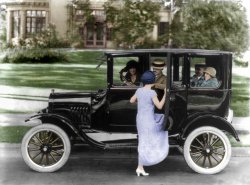
- Temple of Music: 1928
- ... distraction in slow moving traffic.
(The Gallery, Cars, Trucks, Buses, Chris Helin, San Francisco) ... Posted by Dave - 05/24/2016 - 4:15pm -
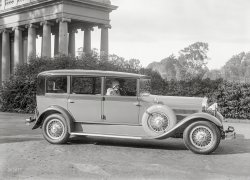
- Lincoln at the Capitol: 1924
- ... jet that gave them such bad PR.
(The Gallery, Cars, Trucks, Buses, D.C., Natl Photo) ... Posted by Dave - 08/15/2012 - 4:37pm -
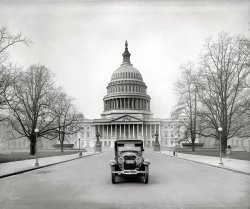
- The New Olds: 1927
- ... 2,317 pounds, and it was priced at $975. All of the open cars made had black pebble grained leather upholstery. Unlike the coupes, the ... your arm and hand out to signal turns.
(The Gallery, Cars, Trucks, Buses, Chris Helin, San Francisco) ... Posted by Dave - 09/07/2016 - 3:39pm -
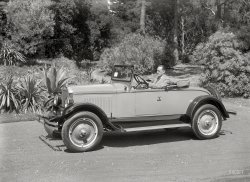
- Trenton Pinsetters: 1909
- ... Later he would work as a hod carrier and parking cars in a parking garage before joining the Marines in 1940. He had a lot to ... Posted by Dave - 12/10/2007 - 3:11pm -
![Trenton Pinsetters: 1909 December 20, 1909. "Boys working in Arcade Bowling Alley, Trenton, New Jersey. Photo taken late at night. The boys work until midnight and later." Photograph and caption by Lewis Wickes Hine. View full size.
Interesting...mix of regular and duckpin bowling on adjacent lanes.
Denny Gill
Chugiak, Alaska
Duck pinsMy Dad told us kids that he once worked in a bowling alley setting duck pins. Didn't say how much he was paid or anything else about this job. This would have been in the 1930s in or around Clairton, PA, south of Pittsburgh. Later he would work as a hod carrier and parking cars in a parking garage before joining the Marines in 1940. He had a lot to say about these jobs.
Joe Bartolini
West Columbia, SC
PercussionThose duckpins look like upside down maracas.
Duck PinsDuck Pins is still a fairly popular variant of bowling in some areas. It's the preferred version in Quebec for example. Candle Pins (where the pins are basically straight tubes with only a slight bulge in the middle) is the found mostly in Eastern Canada and New England.
Concentrate!Those kids must have been very distracting to the bowler.
[I think they stayed behind the tarps until the ball came through. - Dave]
The Tarps *I wouldn't bet on the pin setters dropping behind the tarps. Those are there to take most of the momentum from the balls so that they drop into the pit at the end of the alley. Needless to say the balls hit there with a pretty substantial force. Standing behind them and having limited visibility would be dangerous when some guy is hurling a 16 lb. bowling ball at you. As I understand it most later bowling alleys had a platform above the alley like the one these kids are sitting on but it had a sort of screen or wall in front of it. When a ball went through the kids would drop down set the pins and jump back up all while hoping that some sadistic SOB wasn't throwing another ball to hit them.
[There are a few photos of the kids coming out from behind the tarps, which are not fastened at the bottom. - Dave]
(The Gallery, Kids, Lewis Hine, Sports)](https://www.shorpy.com/files/images/03368u.thumbnail.jpg)
- Offroaders: 1919
- ... against the curb when parked on a hill.
(The Gallery, Cars, Trucks, Buses, Chris Helin, San Francisco) ... Posted by Dave - 01/18/2017 - 1:05pm -
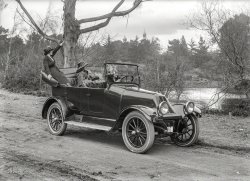
- The Armory: 1906
- ... Visigoths are attacking Worcester!
(The Gallery, Cars, Trucks, Buses, DPC) ... Posted by Dave - 05/09/2014 - 12:10pm -
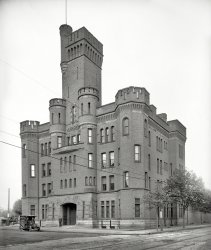
- Garage Fire: 1925
- ... mine has seen the ravages of time!
(The Gallery, Cars, Trucks, Buses, D.C., Fires, Floods etc., Natl Photo) ... Posted by Dave - 04/17/2017 - 11:58am -
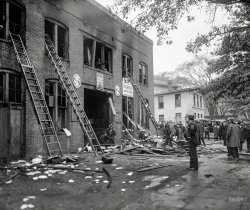
- 8205: 1938
- ... View full size.
(The Gallery, Ben Shahn, Cars, Trucks, Buses, On the Road) ... Posted by Dave - 03/03/2008 - 5:29pm -
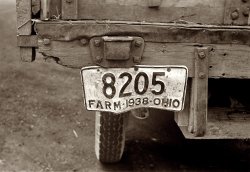
- Ready for Takeoff: 1927
- ... Willys, who pronounced his name, Willis
(The Gallery, Cars, Trucks, Buses, Chris Helin, San Francisco) ... Posted by Dave - 09/16/2016 - 12:28pm -
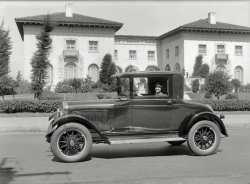
- Sweet Chariot: 1920
- ... Mansion at 2150 Washington. - Dave]
(The Gallery, Cars, Trucks, Buses, Chris Helin, San Francisco) ... Posted by Dave - 06/27/2015 - 2:24pm -
![Sweet Chariot: 1920 San Francisco circa 1920. "Chalmers touring car." Wearing a spiffy "California top." 5x7 inch glass negative by Christopher Helin. View full size.
Detachable top?Looks like a detachable top with an eisenglass window on each side.
["The California top ... can be stowed or removed quickly and has a permanent roof and glass windows" says this period article. -tterrace]
LocationTaken on the 2100 block of Washington Street, north side; not sure of the exact address. The house has been somewhat altered, and is currently obscured by a tall hedge.
[The house is the Phelan Mansion at 2150 Washington. - Dave]
(The Gallery, Cars, Trucks, Buses, Chris Helin, San Francisco)](https://www.shorpy.com/files/images/SHORPY-351-01.thumbnail.jpg)
- Moving Pictures: 1900
- ... not as demanding fuelwise as a regular train of several cars. Nevertheless, it was hot as Hades labor during the summer, but brutally ... Posted by Dave - 09/20/2013 - 1:44pm -
![Moving Pictures: 1900 "1899 or 1902. Lackawanna photo car." Detroit Photographic's rolling studio-darkroom-showroom. 8x10 inch glass negative. View full size.
The futureWhat an interesting photo. I wonder if these people had the foresight of these photos being invaluable to future generations or was this just a business/hobby type venture ? Either way simply amazing !
Cheers.
Wonder if they slept there, tooFrom past Shorpy encounters, this is a famous railcar. With the ladies and child shown, I wonder if it also served as a rolling residence for the owners.
With the likely photo chemical fumes, it probably wouldn't have been conducive to living aboard, but it was a clever and modern way of doing business.
Mr. DPCLooks like William Henry Jackson himself on the rear platform holding the camera.
Morris and Essex RailroadApparently this car really belonged to the Morris and Essex Railroad, which was leased by the Lackawanna for roughly 80 years. Note the "M&E" to the far right of "Lackawanna."
BallastThe DL&W was a blue chip anthracite hauling carrier and extremely profitable. It prided itself on its physical plant, even down to the point of maintaining "razor" edge ballast along it main line tracks.
Posed rocksNo ordinary railroad ballast is that neat.
The colors of natureThose would be black, white, and gray, right?
[They were until DPC colorized their post cards and prints. -tterrace]
BallastI wonder if the rocks were placed that way to prevent water from eroding the tracks. I've never seen a ballast arrangement quite like that.
CoalUngraded coal of various sizes most likely in that tender: those gigantic chunks had to be hand-shoveled by the fireman into the firebox constantly. Possibly the one car consist was not as demanding fuelwise as a regular train of several cars. Nevertheless, it was hot as Hades labor during the summer, but brutally cold, in that open cab, in the winter season.
About that ballastI suspect that this photo was made at a station. The smoothness of the dirt path along the tracks suggests this. It was desirable to keep ballast out of walkways, because plain dirt is safer to walk on. People often twist their ankles while walking on ballast. Also, it is VERY difficult, sometimes impossible, to pull those big baggage carts over ballast, especially when they're loaded down with baggage, mail, and express. Station personnel make their jobs much easier by keeping the surfaces over which they have to pull those things smooth. (I speak from experience.)
(The Gallery, DPC, Railroads)](https://www.shorpy.com/files/images/SHORPY_4a16390a.thumbnail.jpg)
- Santa's Mailbox: 1922
- ... line, can improve on my efforts.
(The Gallery, Cars, Trucks, Buses, Christmas, D.C., Natl Photo) ... Posted by Dave - 12/18/2017 - 7:25am -
![Santa's Mailbox: 1922 Washington, D.C., 1922. "Christmas Post Office." Last glimpsed here. National Photo Company Collection glass negative. View full size.
Truck IDPackard.
WhereaboutsThis one's location is a bit of a puzzler. About the only semi-legible clue is the white sign in the second-story window, which seems to say "[ILLEGIBLE] BEAUTY SHOP."
I took a quick run through the 1922 city directory & saw no entries seeming to correspond to the lettering in the first word. Perhaps some other sleuth, aided by the fact that this is a corner building next to a streetcar line, can improve on my efforts.
(The Gallery, Cars, Trucks, Buses, Christmas, D.C., Natl Photo)](https://www.shorpy.com/files/images/SHORPY-06059u.thumbnail.jpg)
- Out for Delivery: 1912
- ... inventory control must have been a mess.
(The Gallery, Cars, Trucks, Buses, D.C., Harris + Ewing, Stores & Markets) ... Posted by Dave - 08/27/2012 - 3:21pm -
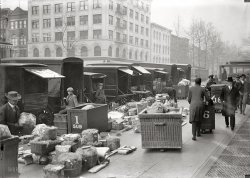
- Pere Marquette: 1910
- ... sailing late that night to Milwaukee with twenty-nine rail cars aboard. At 3 AM she began taking on water which the pumps could not ... Posted by Dave - 07/20/2012 - 3:42pm -
![Pere Marquette: 1910 The Chicago River circa 1910. "Pere Marquette transfer boat 18 passing State Street bridge." Railcar ferry built in a record 90 days after its namesake sank in Lake Michigan. Detroit Publishing Company glass negative. View full size.
Father MarquetteThe first Pere Marquette 18 was built 1902 at Cleveland by the American Ship Building Company. During the summers of 1909 and 1910 the Pere Marquette Railway chartered this vessel to a group from Grand Haven, Michigan, known as the Chicago Navigation Company and who placed her in the excursion trade between Chicago and Waukegan. A rail ferry that ran across Lake Michigan from Ludington, Michigan, to points in Wisconsin, her car deck was used as a dance floor and rumored to also house gambling operations. Returning to Ludington after Labor Day, she re-entered service September 8, 1910, sailing late that night to Milwaukee with twenty-nine rail cars aboard. At 3 AM she began taking on water which the pumps could not handle. At around 4 PM her captain sent out a CQD (forerunner of the SOS) distress message by wireless, attracting the vessel's near-sister, the Pere Marquette 17, which attempted to maneuver close enough to the stricken Pere Marquette 18 to remove passengers and crew. Suddenly, a little after 7 AM, her stern plunged beneath the water and she went straight down in a matter of seconds, it estimated twenty-seven to twenty-nine lives lost.
The Pere Marquette ordered a replacement immediately. Incredibly, the second Pere Marquette 18 was launched at the South Chicago yard of the American Ship Building Company on December 20, 1910, and entered service the next month. Removed from service 1954, as a little kid I recall her sitting forlornly on Pere Marquette Lake at Ludington until she was towed to Hamilton, Ontario, in 1957 for scrapping.
The tug T. T. Morford shown was built 1884 by the Miller Brothers at Chicago, and her design proved so successful that she became the model upon which almost every subsequent Chicago harbor tug would be built.
PM18 (II)Launched December 20, 1910, in Chicago. More here.
T T MorfordThe TT Morford was a tugboat with an interesting history:
The tugboat T.T. MORFORD was built in 1884 at Chicago and served the area faithfully until 26 October 1895, when her boiler exploded. She was rebuilt and went back into service adding another strange twist to history, for it was this same tugboat that 14 years later would rescue 20 or more people from Chicago's 68th Street Water Crib Fire. A fire which killed 60 men in January of 1909.
The vessel shownis the first Pere Marquette 18 while chartered to the Chicago Navigation Company, taking summer excursionists to Waukegan, to clarify my earlier post. The second Pere Marquette 18 remained exclusively in the rail trade between Ludington and Wisconsin ports its entire career.
[Why do we think this is the first Pere Marquette? - Dave]
An Excursion?Seems to be a significant number of the fairer sex aboard, and the ship seems to be riding very high in the water, so I don't think it has a load on. The ship was launched December 20, and arrived in Ludington Michigan on January 30 - it sure doesn't look like mid winter in the picture - perhaps a spring or summer excursion for railroad employees? There's even a bass drum on board, right above the 'P' in the ship's name.
[Midwinter would be February. December 20 is (barely) fall. But yes, it was chilly -- the high was 32, so this is probably not launch day. It may not even be launch year. - Dave]
The control houseseems to match that of the first PM 18:
http://www.carferries.com/pm/PM18/
vs PM 18 (II):
http://www.carferries.com/pm/PM182/
(The Gallery, Boats & Bridges, Chicago, DPC)](https://www.shorpy.com/files/images/4a18153a.thumbnail.jpg)
- Tots of Tripoli: 1946
- ... the other side of the room is filled with blocks and cars and paint easels, these kids get lousy playthings -- an abacus and that ... Posted by Dave - 08/17/2012 - 6:23pm -
![Tots of Tripoli: 1946 March 1946. "Tripoli, Lebanon. American Mission Girls' School, the kindergarten in class." Medium format acetate negative, Matson Photo Service. View full size.
Prim and properThe prim, cross-legged girl on the right reminds me a lot of my mom at that age. Prim and properness included! My dad was born the year this photo was taken - most of the kids are probably still around. I wonder how they feel about what's going on there today? The thought of mission schools always leaves me with a funny taste, but it seems as if this may be a fondly remembered time, especially now.
Any chance you can tell what the things hanging across the room are? I'd also love to know what the dolls on the shelf in the back are used for. And is that a light in the middle? Could it be any more woefully small for the room?
More Obedient Five Year OldsI realize that this was 65 years ago and these people would be approximately 70 yrs. old today but I doubt that you could make 21 children about 5 yrs. old sit quietly and behave like that now. Also, I remember when every school teacher had to have the ability to play the piano and lead their class in singing patriotic songs each morning. That also isn't happening today. Can't really say which era had the better daily routine but I'm partial to the olden days.
WhowI'm hot for teacher.
[Who's about to have you step up to the blackboard and write "Wow" a hundred times. - Dave]
Did Tripoli movefrom Libya to Lebanon and back?
[Tripoli, Lebanon, is where it's always been. - Dave]
[D'oh! - OP]
The Citizens of TomorrowThere's a WWII-era poster hanging on the wall on the left.
Not quite sure what to make of thisThe happy expression on the face of the pianist stands in stark contrast to the poker-faces of the children. The girl seated 7th from the right seems to be hinting at a smile, but the rest of them look like they are listening to an entirely different tune than the one she is playing. I've also noticed that the boy seated second from the right and the boy seated 6th from the left appear to be twins.
Turn on the heat alreadyMust have been a heck of a cold day, or that classroom must have had very poor heat, for so many of those kids to be wearing coats and sweaters indoors.
The floor also seems to have never met a janitor. And unless the other side of the room is filled with blocks and cars and paint easels, these kids get lousy playthings -- an abacus and that shelf of home-made looking fabric dolls.
I'm not sending any kids here!
Two TripolisThere are two Tripolis. The one in Lebanon is called Tripoli while the one Libya is differentiated by adding "West" to its name such as Tripoli-west or Tripoli of the West (Trablus el Gharb in Arabic).
[There are many Tripolis. The word is Greek for "three cities." - Dave]
(The Gallery, Kids, Matson)](https://www.shorpy.com/files/images/12810u.thumbnail.jpg)
- Luxury Car: 1917
- ... negative was shot on glass. - Dave]
(The Gallery, Cars, Trucks, Buses, San Francisco, W. Stanley) ... Posted by Dave - 10/29/2014 - 11:22am -
![Luxury Car: 1917 The Bay Area circa 1917. "Jordan touring car." The tot-laden vehicle seen here yesterday, a Jordan advertised as the "Seven-Passenger Luxury Car," with the same driver but minus the kids. Note the literal NON-SKID tire tread. Glass negative from the Wyland Stanley collection of San Francisciana. View full size.
Non-noirI wonder what color it was. Appears to not be black.
[For 1917 the car was available in "a bright mahogany maroon or in a deep, soft Venetian green. Take your choice. Either shade is fashionable." - Dave]
LUXUR Y CARThe kids are laying (or is it lying?) in the road a ways back, tossed out by by the rough ride.
[Lying! - Dave]
The Brand That Changed AdvertisingNed Jordan, head of the company, revolutionized automobile advertising with his famous "Somewhere West of Laramie" ad for the Jordan Playboy roadster. This was the ad that marked the change from product description to "what you drive says who you are" image promotion. Here's the text, for you young 'uns:
"Somewhere west of Laramie there's a bronco-busting, steer roping girl who knows what I’m talking about. She can tell what a sassy pony, that’s a cross between greased lighting and the place where it hits, can do with eleven hundred pounds of steel and action when he's going high, wide and handsome. The truth is - the Playboy was built for her. Built for the lass whose, face is brown with the sun when the day is done of revel and romp and race. She loves the cross of the wild and the tame. There's a savor of links about that car - of laughter and lilt and light - a hint of old loves - and saddle and quirt. It’s a brawny thing - yet a graceful thing for the sweep o' the Avenue. Step into the Playboy when the hour grows dull with things gone dead and stale. Then start for the land of real living with the spirit of the lass who rides, lean and rangy, into the red horizon of a Wyoming twilight."
Actually, it was a perfectly ordinary automobile, but with flimflam like that, who cares?
Probably Venetian GreenHard to know for sure, but given the 1917 date and the likelihood the film used to make the photo was orthocromatic stock, if the car was "mahoghany maroon", it would render much darker in the photo.
[Emulsion, not film. This negative was shot on glass. - Dave]
(The Gallery, Cars, Trucks, Buses, San Francisco, W. Stanley)](https://www.shorpy.com/files/images/SHORPY-141029-0001.thumbnail.jpg)
- Power Steering: 1943
- ... down 6 inches...normal for the times!
(The Gallery, Cars, Trucks, Buses, John Vachon) ... Posted by Dave - 08/01/2013 - 10:02am -
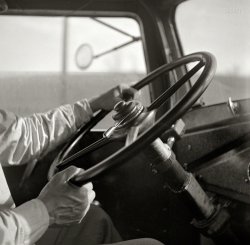
- Modern Family: 1922
- ... when side curtains were erected.
(The Gallery, Cars, Trucks, Buses, Chris Helin, Kids, San Francisco) ... Posted by Dave - 09/09/2015 - 8:16pm -
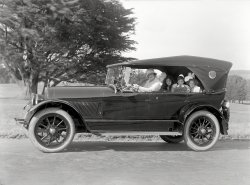
- California Ramblers: 1967
- ... and tan with an interior to match.
Dad bought AMC cars from 1960 until they were no longer available, one reason being that they ... Posted by tterrace - 06/06/2019 - 1:56pm -
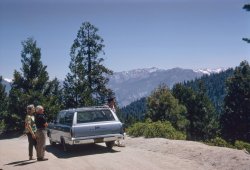
- Smith Storage: 1920
- ... light and access to their property.
(The Gallery, Cars, Trucks, Buses, D.C., Horses, Natl Photo) ... Posted by Dave - 09/11/2011 - 7:42pm -
![Smith Storage: 1920 Washington, 1920. "Smith Storage Co., 13th & U Streets N.W." With the motor truck gaining fast on the horse team. National Photo Company. View full size.
A. C. Smith: Mambo EnthusiastWashington Post Sep 25, 1955
First Sold Flavored Snowballs, but This Was Too Seasonal
By Eve Edstrom
Forty-five years ago, Arthur Clarendon Smith went into business with four horses, two open-top feed wagons and $400 which he borrowed from his wife.
Today the assets of Smith's Transfer and Storage Co. are placed at $1,500,000. The firm has 200 employees, operates a fleet of 52 motor vehicles, owns six modern fire-proof warehouses and that slogan: "Don't make a move without calling Smith's."
At age 72, the founder and owner of the moving company still works from 8 a.m. until 6 p.m. daily, never takes a vacation and never intends to retire.
His success secrets are simple: Take a 15-minute nap twice a day, leave liquor alone and vote the Democratic ticket.
... by the time he was age 10, he was in business, selling flavored snowballs for a penny apiece. This business was too seasonal, though, and his next venture was raising guinea pigs. His father soon offered him more money, 50 cents a day, and he went to work for Clarendon Smith's wholesale grain and feed company at 5th and K sts. nw.
The alert Arthur wasn't long in noting there was a great need for adequate means of transporting grain. More important, he was convinced that horsedrawn vehicles soon would be a thing of the past, that motor trucks would benefit a transfer business.
So in 1910 he founded the Greater Washington Express Co. The first three years were not happy ones financially. As Smith recalls them, he was best by fires, thievery and payments of fines to the Humane Society. ...
In 1916 Arthur Clarendon Smith recognized the advantages which would result from operating storage facilities in conjunction with the growing transfer business. ....
Immediately after World War I, father and son set out to build a large fireproof storage warehouse. Construction of their main building began with only $10,000 in working capital. In 1920, it was opened at 1313 U st. nw. Valued at more than $300,000 today, it is the hub of all the firm's activities. ...
A vigorous man who smokes continually, Smith plays just as hard as he works. Currently, he and his bridge of almost 49 years are mambo enthusiasts.
Horse HockeyI really hope those 3 horses weren't responsible for the pile of rubble beneath the trucks in the middle of that parade.
Is this it?I took a walk down that part of town today.
This building looks a bit like it, but is on U St. between 14th and 15th (not 13th as in the caption).
There are just enough differences between the photos to make me wonder, but it seems like the only similarly-size building in the area.
(Also, no horses now.)
Smith Storage Revisited
1920 photo of Smith Storage, next to the U Street Oyster House. Click to enlarge. Below, an Aug. 24, 1919, news item.
Smith Storage Co. Expands
Work on Big $140,000 Fireproof Warehouse
To Start This Week.
Plans have been completed by the Smith Storage and Transfer Company for the erection of a big six-story fireproof storage and warehouse at 1307 U street northwest, to cost $140,000. Work on the structure will begin this week.
The building is to be of reinforced concrete, with metal partitions, doors, rooms, walls, etc. It will have a frontage on U street of 70 feet, and depth of 120 feet. The architectural design is to be unusual, the barnlike effect usually noticeable in buildings of this character to be avoided, and the front having what might be called a mission in Spanish effect. ...
Ready to show off.The wall doggers have the building lettered, and all the vehicles are lined up for the shot in front of their proud new facility. It appears the one truck backed into the spot over the huge pile of horse apples. While I'm sure they wanted those gone for the shot, I have every confidence that the street sweeper was avoiding that block!
[That's dirt from taking a tree out its hole in the sidewalk. - Dave]
Fidelity Storage CompanyNice to see the photo of Fidelity Storage. The Building is still there at 1420 You Street NW but the company has changed hands many times since my Dad and Uncle sold the business in 1958. Started by my Grandfather, James L. Karrick, in 1905. I still have a miniature wooden mothproof rug storage chest from the company.
Fidelity Storage, 1420 U Street NWThe color photo in an earlier comment shows 1420 U Street, Fidelity Moving & Storage, still in operation in 2016 as Extra Space Storage. Extra Space bought Storage USA circa 2005 and at that time began updating the property interiors, including replacing the original freight lift on the east side of the building. The elevator housing is seen on roof, the left edge of the photo. Up until then, the freight lift was in regular use and available to customers to operate themselves.
Light and installation artist Rockne Krebs and painter Sam Gilliam once owned the adjacent warehouse building next door. It is now Goodwood, a furnishings and home design shop.
Other artists in the immediate neighborhood included Franklin White, James Wells, Alma Thomas, and many younger artists of the 80s and 90s.
In the 1980s Treto Way, the large alley running from 14th street to 15th street was an open air drug market. In recent years, artists living in alley building behind U Street struggled with the developers of the Louis luxury apartment building, eventually winning some concessions but losing others to protect light and access to their property.
(The Gallery, Cars, Trucks, Buses, D.C., Horses, Natl Photo)](https://www.shorpy.com/files/images/29110u.thumbnail.jpg)
- Panama Canal: 1915
- ... the Canal back to the Caribbean side. The passenger cars were wooden with lanterns for lighting. It looked like a movie set from ... Posted by Dave - 08/10/2012 - 12:19am -
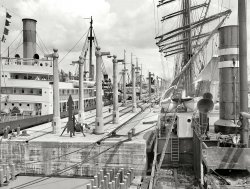
- Hudson Ramblers: 1928
- ... that hat into a present day automobile.
(The Gallery, Cars, Trucks, Buses, Chris Helin, San Francisco) ... Posted by Dave - 03/31/2016 - 2:23pm -
![Hudson Ramblers: 1928 San Francisco, 1928. "Hudson convertible sedan at Golden Gate Park." Latest entry in the Shorpy Catalog of Discontinued Conveyances. View full size.
Near PerfectIf you're gonna ramble. this looks like just the carriage to chose. The door locks [?] are an interesting feature.
I would like to see the driverof this land locomotive try to fit himself and that hat into a present day automobile.
(The Gallery, Cars, Trucks, Buses, Chris Helin, San Francisco)](https://www.shorpy.com/files/images/SHORPY-934A.thumbnail.jpg)
- Mex-Tex: 1939
- ... before the Millennials came along!
(The Gallery, Cars, Trucks, Buses, Kids, Russell Lee) ... Posted by Dave - 01/08/2018 - 1:49pm -
